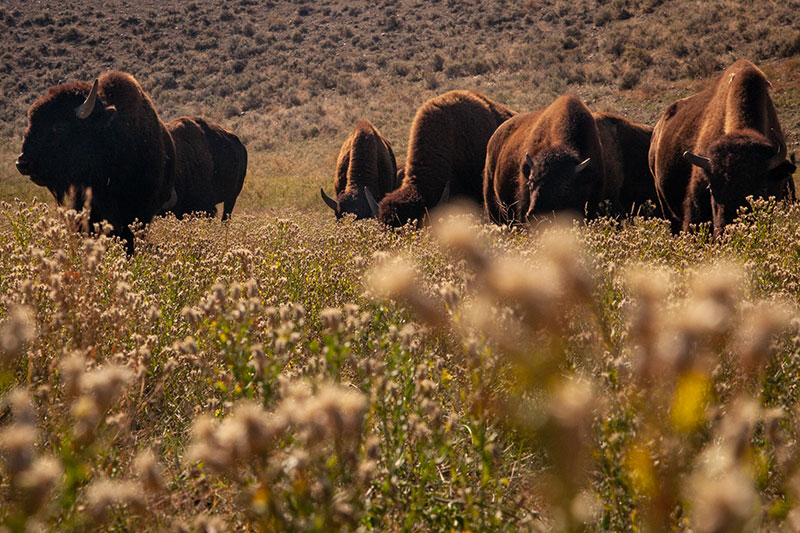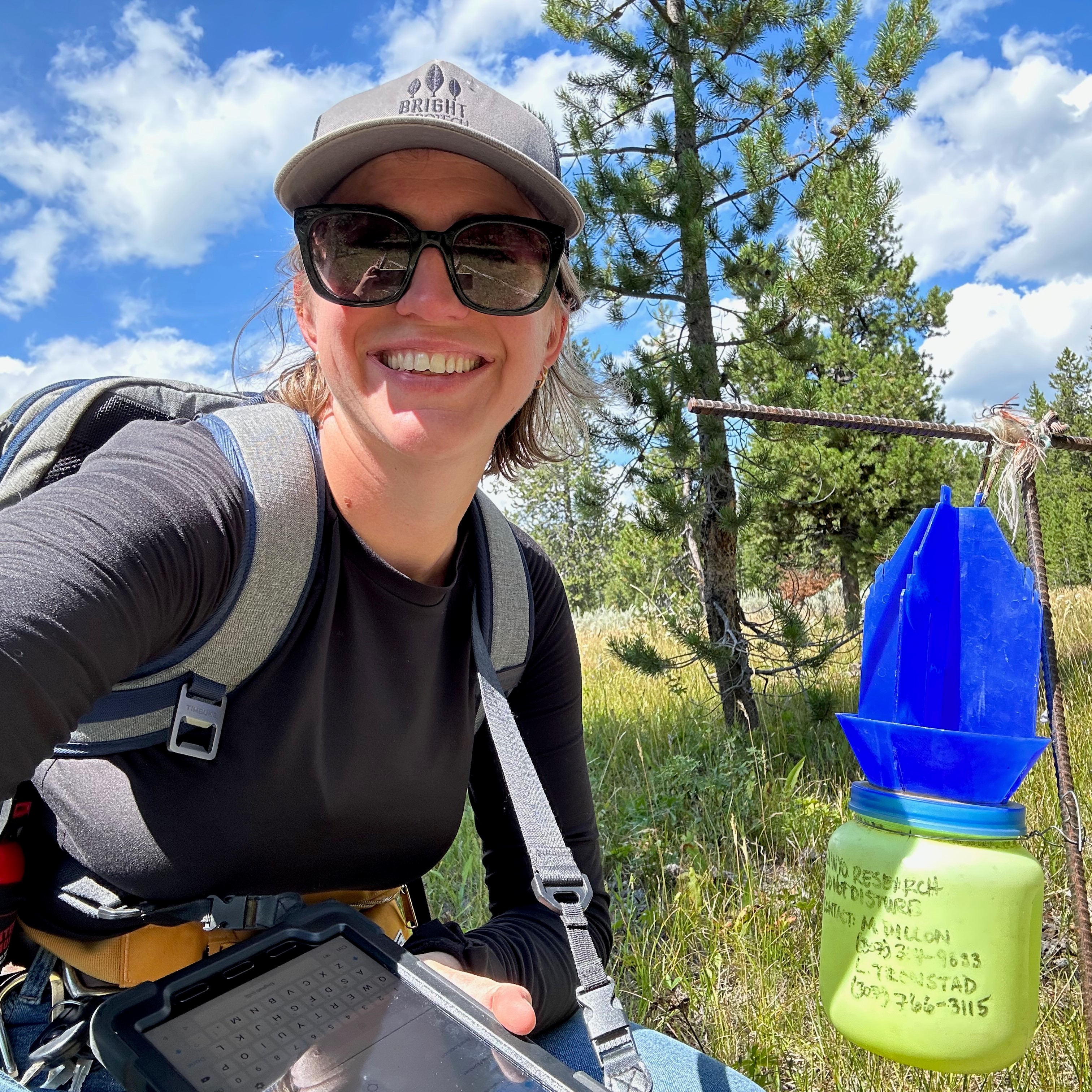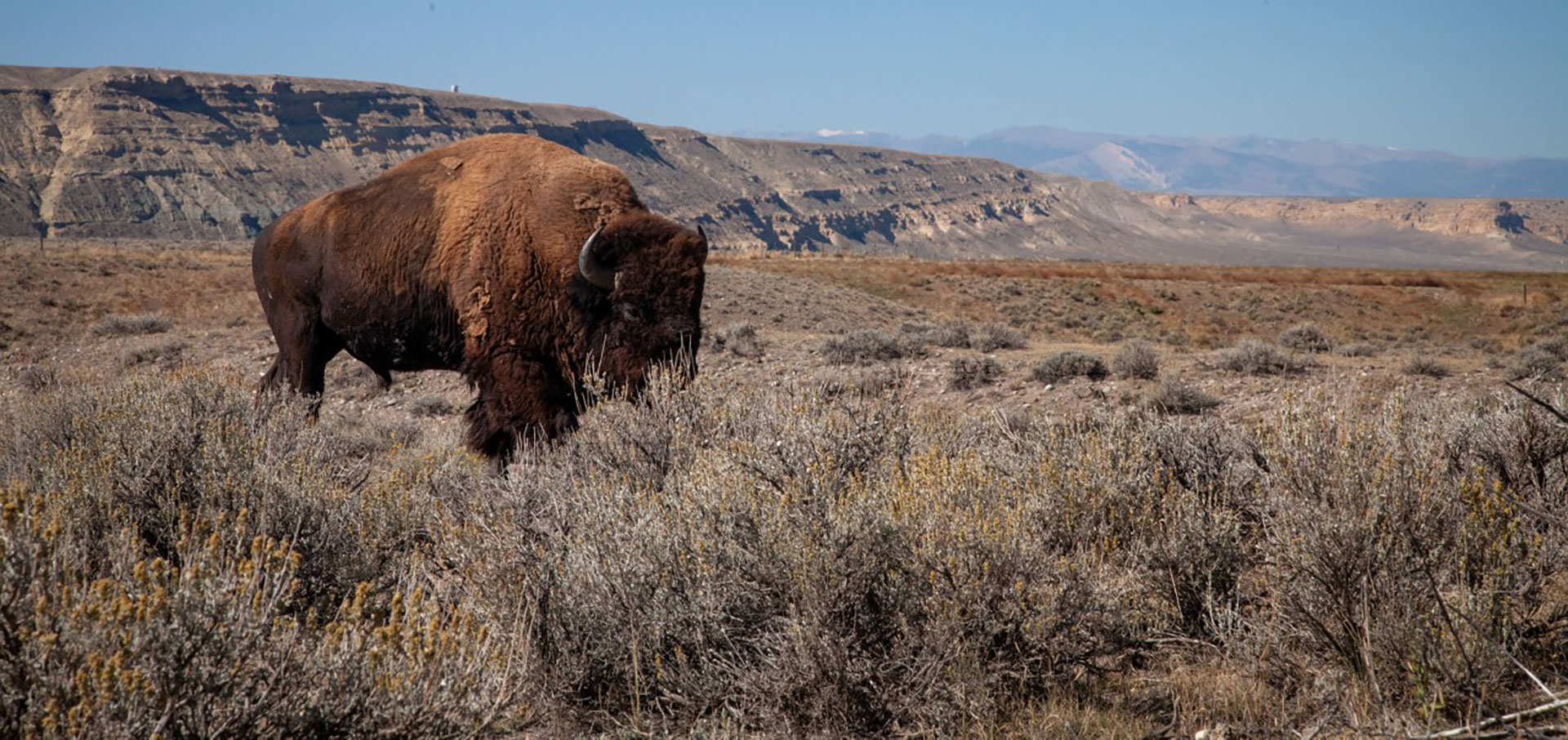Janey Fugate - How do ungulates learn to migrate? A Century-Long Case Study with Yellowstone bison
Janey Fugate
The Richard Baldes Native American Excellence Fund in Biodiversity Conservation Awardee
Wyoming Cooperative Fish & Wildlife Research Unit
Graduate Advisor: Dr. Matthew Kauffman

A photograph of the the Eastern Shoshone's bison herd - Photo: Janey Fugate
The near extirpation of bison, once a keystone species in the American West, is an iconic example of how dramatically animal migrations can disappear in the face of human exploitation. But unlike other species that have lost their migrations, a remnant of this wild population persisted in what remains a stronghold for large ungulate migrations in the U.S.: Yellowstone National Park. As bison herds grew in the park over the last century, they also re-established seasonal migrations, becoming one of the only examples worldwide of ungulates learning to migrate. The objective of this project is to evaluate what the 100-year record can reveal about how Yellowstone bison re-learned their migrations, shedding light on what migratory ungulates are capable of in the face of radically changing landscapes and new barriers. This project will thus contribute to the growing body of research seeking to document and analyze animal learning and efforts to maintain landscape connectivity.
The loss of bison in North America meant far more than the loss of migration patternsand their impact on the landscape. The history of Indigenous peoplesand bison were inextricably linked, with the life ways that Native peoples built around bison diminishing along with the herds.As tribes around the U.S.now lead bison restoration efforts, with Wind River as an example, we hope this research can contribute to tribal management efforts and conservation decision-making.Reciprocally, we also aim to incorporate traditional ecological knowledge as it pertains to bison movements in the region.
Questions and hypothesis: Migration is an important strategy in the life history of many ungulate taxa and as a phenomenon has important ecological consequences. A variety of studies now show that migratory ungulates rely on memory of past migrations to time their departures and make their journeys across large landscapes. Knowledge is transmitted culturally, from generation to generation. However, a recent study of another large ungulate migration, zebra (Equus burchelli) in Botswana, provided evidence of animals re-establishing a historical migration just four years after the removal of a fence that had severed the route for nearly 50 years. This study complicates the social learning hypothes is for ungulate migration and offers room for inquiry into the other ecological factors that may facilitate more rapid development of new (or restored) migrations. Although these studies reveal some of the mechanisms of learning that underpin migration, no longitudinal record exists where the evolution of an ungulate migration over a century has been documented. This is especially true where human interventions are involved. Unlike the now famous example of managers teaching whooping cranes (Grus americana) how to migrate via ultralight planes, there have been no documented examples of managers teaching ungulates to migrate via direct intervention.
We aim to investigate the extent to which the social learning hypothesis applies to bison and to identify the relative importance of factors such as spatial memory and environmental cues, in seasonal migrations. More specifically, we will ask how Yellowstone bison re-learned their routes and how long this behavioral process took to play out.We know enough about the modern cues of spring and fall migrations that we can use the historical record to ask key questions about what events likely prompted major movements into new areas as the bison migration expanded.
Share This Page

Research Highlights





